A Magical Mansion in Chongqing

When visiting China’s fourth largest city of Chongqing in Sichuan province located in the heartland, The Redding International Tower A is probably not the first attraction you would think of visiting.
It’s a 48 story tower part of a large commercial and residential complex located in the CBD of Guanyinqiao, one of the largest and most prosperous business districts of the city. During the day its gray facade looks like it hasn’t been cleaned in a long time, which adds to the impression that this is just another plain and dated high-rise residential building built on an equally dated podium building. Three years ago, the celebrated Taiwanese writer and WeChat celebrity Liao Xinzhong visited Chongqing and saw how at night the windows on the different floors of the tower vibrantly light up in bright colors. He asked his friend what the building was for, and after learning that the tower featured countless stores inside the building, he visited the place and published a blog post on his Sina Weibo account called ‘Chongqing Magic Tower Redding International Six Days and Five Nights Fantasy Travelogue’. In his blog he explores what he calls “the Tower of Mordor of the entertainment industry” and documents the days he spent living in the tower. In an almost Alice in Wonderland-like way he leads his readers on a tour through the vibrant chaos, vitality, and diversity of the tower’s countless stores he found inside. This article made this place, which had already been popular among younger locals including myself, an absolute Chinese internet sensation, which further accelerated this “the wildest commercial and residential building in China.”
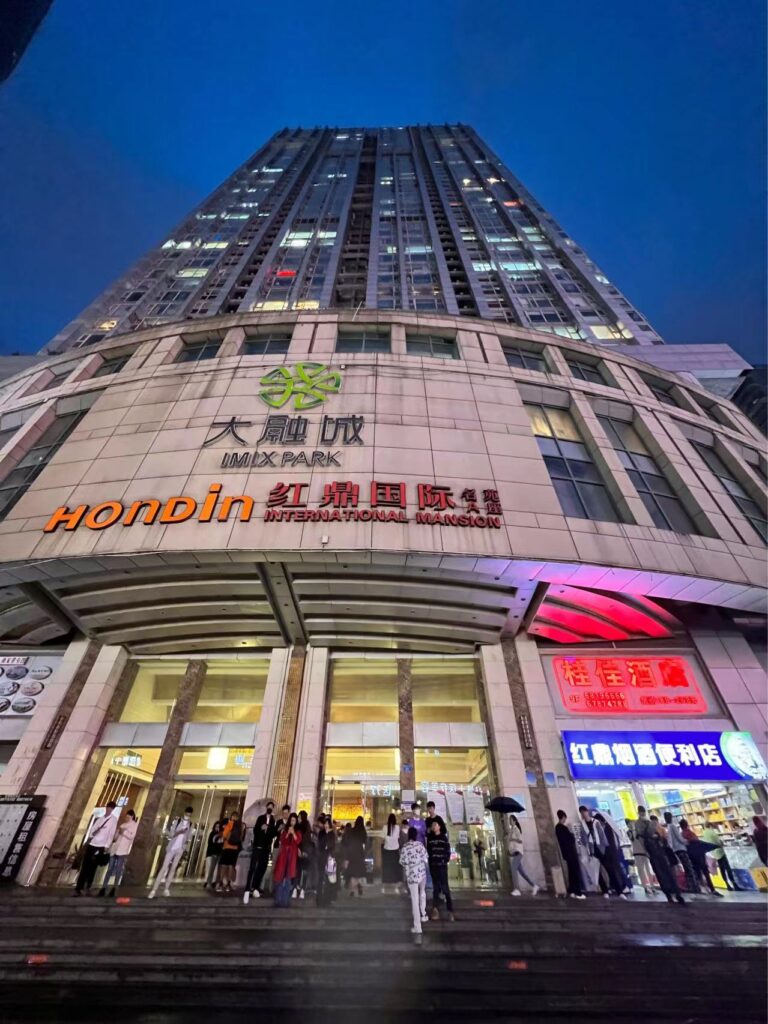
Outside The Redding International Tower, Guanyinqiao CBD.
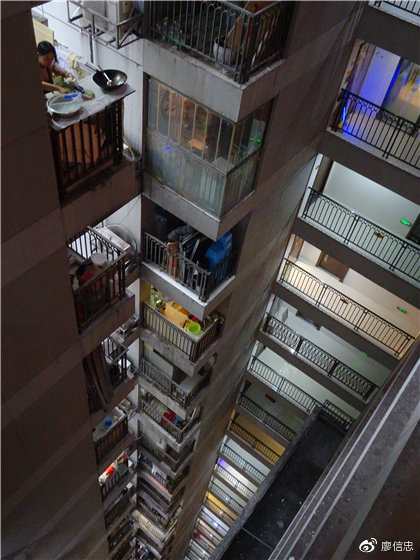
Outside The Redding International Tower, Guanyinqiao CBD, what happens in the tower, stays in the tower, vertical courtyard
Of the 476 formerly residential units, there are around 450 stores creating a stunning variety of experiences: from a wide variety of table games stores, clothing stores, and vintage stores selling Lolita outfits, to various animal cafes (mainly cats and dogs) and private restaurants which range from internet celebrity chefs to experimental molecular and new fusion cooking. There are also themed private cinemas (including several Peppa Pig themed ones), a host of VR experiences, escape rooms, massage stores, cosplay stores, dance studios, hair salons, yoga studios, sleazy loan sharks, gyms, video game stores, bars, homestays, chess and poker rooms, teahouses, and grocery stores as well as places hosting math Olympiads and stores offering the opportunity to learn to play piano in 30 minutes.

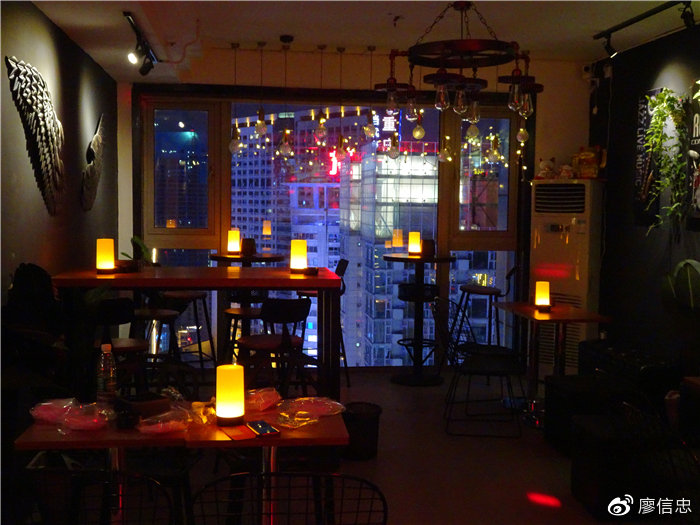
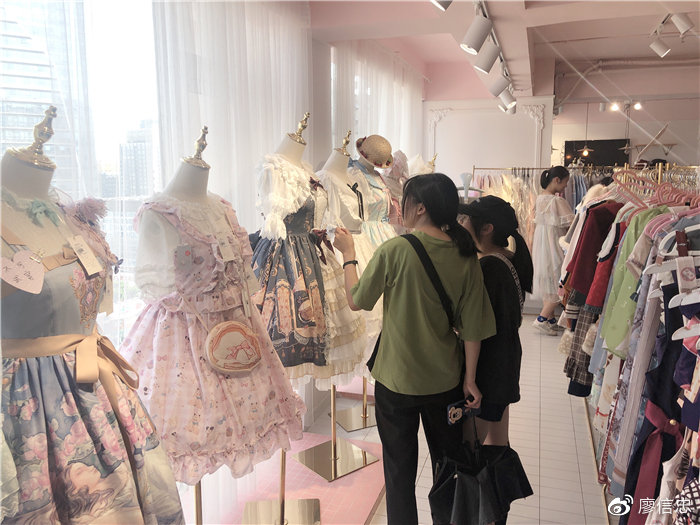

476 former residential units in the tower now host at least
450 di!erent small, independent businesses
In Delirious New York (1978), Rem Koolhaas describes the 1931 built Downtown Health Athletic club, a tower also with a relatively inconspicuous exterior and vibrant interior, he found in New York as “a machine to generate and intensify desirable forms of human intercourse.” For Koolhaas the invention of the elevator, combined with electrical lighting and air conditioning, created the possibility for a form of architecture that could endlessly accommodate any activity under every circumstance: “each plan is an abstract composition of activities that describes, on each of the synthetic platforms, a different ‘performance’ that is only a fragment of the larger spectacle of the Metropolis.” The Redding International Tower A can be considered its excessive Chinese peer. Here it’s not just every floor offering a different “performance” , but behind any of the ten doors on each floor a new world opens up. A sign on perhaps the most mysterious door in the complex described by Liao Xinzhong makes this more than clear: “Please open the door if you are a cat.”
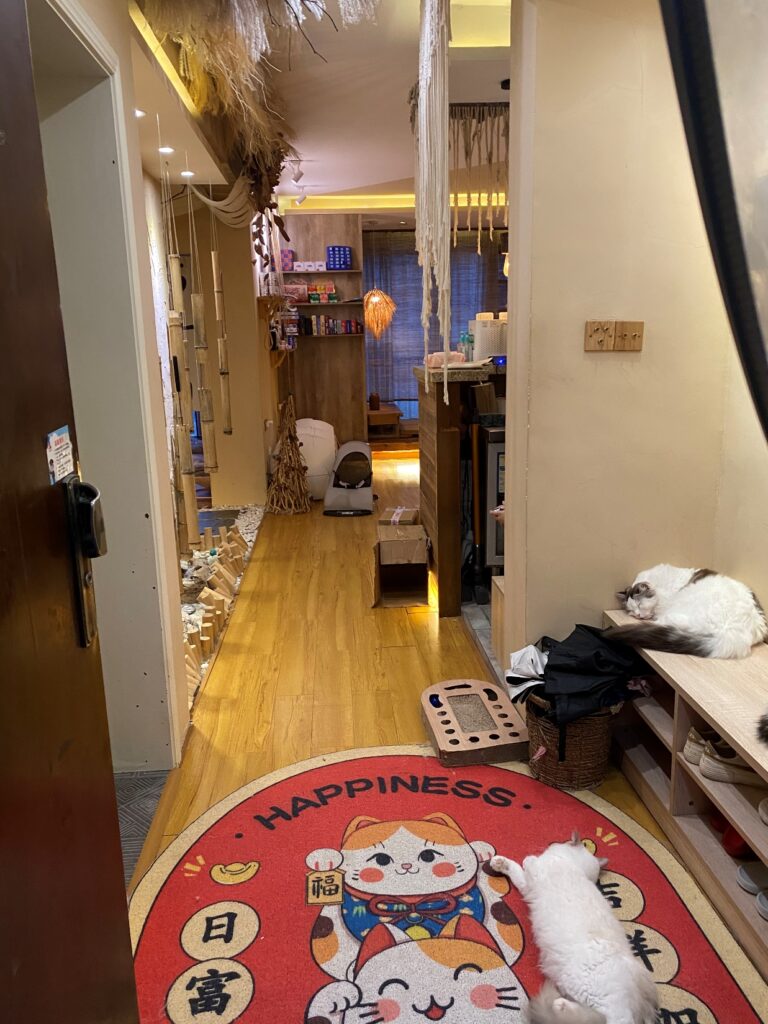

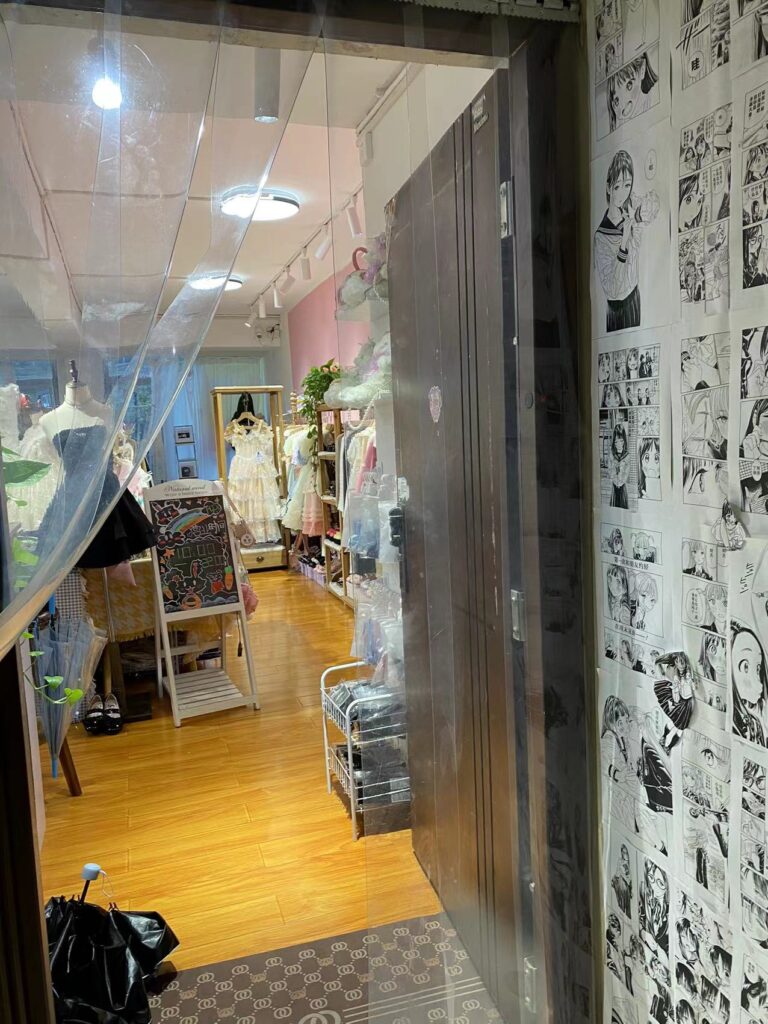
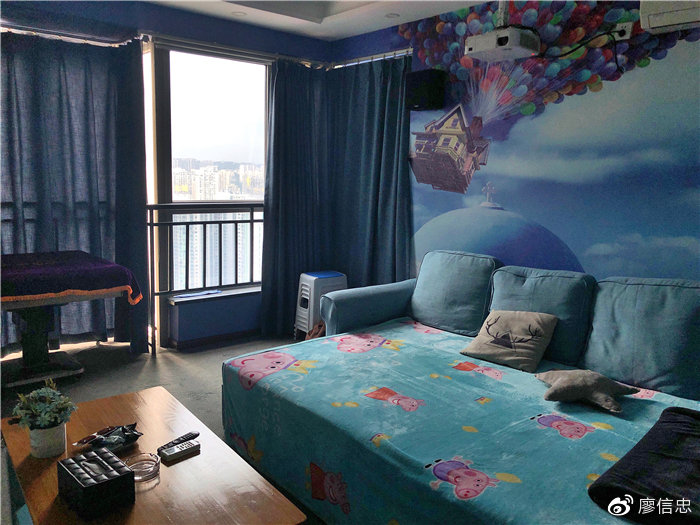
Stops on di!erent floors: one of many cat cafes, one of multiple very pink bedrooms and a
Peppa Pig and Pixar’s UP fusion interior
I discovered the building with a friend eight years ago, when I was a 13-year-old junior high school student and cat cafes were just starting to become popular in China. My cat-loving friend and I searched online for cat cafes in Chongqing where I grew up and found that there were many in this building. We started hanging out there from time to time just to order a cup of coffee and play with the in-store cats all afternoon. At that time our pocket money was not much, so we would only go there once a month or two. Until now, my old classmates and I still often meet in the tower to play board games during holidays. We tend to play long, so we order take-out directly from the store while playing. Even though the temperature in Chongqing reaches 40 degrees in summer, visitors are still happy to wait in line downstairs, even if the line goes all the way from the elevator to the foyer and then from the foyer to the outdoors. The Redding International Building A has only four passenger elevators and two freight elevators, which can mean that it takes at least half an hour, sometimes an hour, to get to the floor you want. The last time I spent money at Redding International Tower A, I bought a coupon with my best friend before returning to school last month. There we had a candlelight dinner at a Western restaurant that was extravagantly styled with an array of colored lights designed for posting gauche selfies on social media, and then we went to a footbath store on another floor for a foot massage.
Liao Xinzhong describes the building as an “organic city” where he wanders the floors as if he flows through “rivers and lakes”. It makes him feel like he is playing a role playing video game: “It felt like a place where Jia Zhangke would make movies […] a one-stop service for social people.” Even more dramatically, he continues, “The more I walked, the more I felt that this courtyard was extremely magical, just like a group of people living in a huge fortress-like building in a science fiction movie; I deeply felt that when the zombie tide came, the rich life style […] could fully become the last giant bastion of human entertainment civilization.” Although there are no official records, estimates suggest that at least 10,000 people are packed into the building at the same time during peak hours. It’s hard to understand why this tower exists in the bustling and modern CBD with many luxury shopping malls around it. How did this tower full of hundreds of stores serving fun-loving young people of Chongqing, most of which are also owned by young people, come to be?
There was no ‘plan’ for this to happen, and it remains unclear how it became the success it currently is. The tower was completed in 2006 as one of the three towers (the other two were B and C) and was the highest-end building in the area at the time, with only wealthy families and companies with good development prospects being able to afford to move in. By 2012, as more mature development plans were proposed in the area, the CBD gradually became more sophisticated with more even taller and more luxurious buildings going up and high-end shopping centers. This meant that the Redding commercial and residential enterprise began falling into disrepair.
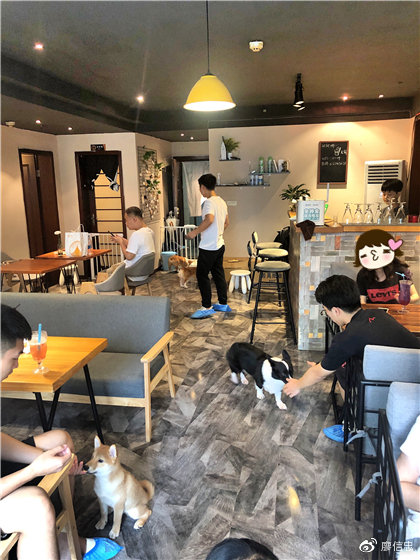


While the average monthly rent in other parts of the CBD is now nearly 10,000 RMB, the rent for Block A of Redding are only 4,000-5,000 RMB per unit per month, and in some sections go as low as 2,000 RMB per months, which, coupled with its prime location in the CBD, attracts a large number of young entrepreneurs. A business license isn’t necessary to open a shop and the typology of the residence makes for an immediate intimacy for visitors which can’t be found in the big malls. The higher the floor, the cheaper the rent, the newer the stores, and the younger the owners. Most of them are just looking to make their first bit of quick money as a basis for seeking a bigger career elsewhere. On average, stores seem to stick around for 3 months. The low cost of opening a store and the highly convergent business format make means vacant lots are quickly filled. Another unique feature of Redding International Block A is the huge 48-story patio in the heart of the building. This structure shrouds the corridor in dim light all year round, creating a flat and seemingly isolated atmosphere. The dull corridors are in stark contrast to the vibrancy found inside each unit: rich interiors and vibrant people walk across thresholds and then stare across the deep, dark patio as if they were looking at people from a parallel universe. This sharp contrast with the real world creates a rather bizarre experience, it is what makes this building magical without anyone ever planning for it. This form of spontaneous design reminds one of what Koolhaas says about the Downtown health athletic club: “It had developed know-how and initiative overtake the theoretical lifestyle modifications the 20th century Avant-garde have been insistently proposing, without ever managing to impose them.” Watching people come and go in the building, you realize that they seem to have unintentionally created an ever-changing, crowded vertical city of hundreds of small, completely different boxes in the building. It seems rather unlikely that there will be another building like this in China in the near-future, but who knows given the current real estate challenges facing the country at large; inspiration could be found in real magic.